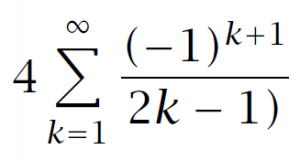I will be teaching a new class, OPIM 4895 Spreadsheet Modeling for Business Decision Making.
The class will focus on the techniques that businesses use to obtain a competitive advantage through analytics. The course will be based in Excel, to learn how the techniques work, and students will be able to translate the skills from the class to special-purpose tools that companies often use for particular problems.
Problem settings will span all of the functional business areas: operations (my background), finance and marketing, and there will be case work involved in the class to look at how analytic modeling fits into the business situation that requires decisions to be made. The right decision is always a function of the business strategy, which is why different companies “solve” problems in different ways (consider that Delta, Southwest and Skybus can all fly you from Hartford, but in very different ways).
Part of the class will focus on “optimization.” In these settings, we will try to represent complex decision settings where there are limits on what the decision maker can do. For example, suppose that as marketing manager, you have to allocate the money for a new product campaign across different channels (print, radio, television, web). What is the best use of the limited dollars? Or suppose you are trying to schedule people in a customer service center in such a way that their schedules are “attractive” and that customers get good service but also that the total cost is as low as possible.
We will also look at “decision analysis” where uncertainty about the world is only revealed after you must make your decision. Think about the poor person on Deal or No Deal, with everyone screaming different decisions. Is there a way to think about making “good” decisions? The answer is yes, by the way.
Part of the class will also be devoted to the increasing use of simulation in business. Older techniques use “scenarios” to evaluate a business decision in the face of different possible outcomes (interest rates rise by some amount, decrease by some amount, stay flat). Within a spreadsheet model, it is possible to create models that can sample thousands of possible scenarios and reveal the patterns of how the business works in those different scenarios. In much the same way that a pilot uses a simulator to practice landing in different weather situations, simulation can be used by businesses to “try out” different strategies against possible future scenarios to better understand how to proceed. Risk analysis is quite often done in this way for financial planning.
Please feel free to email me if you have other questions about the class.
